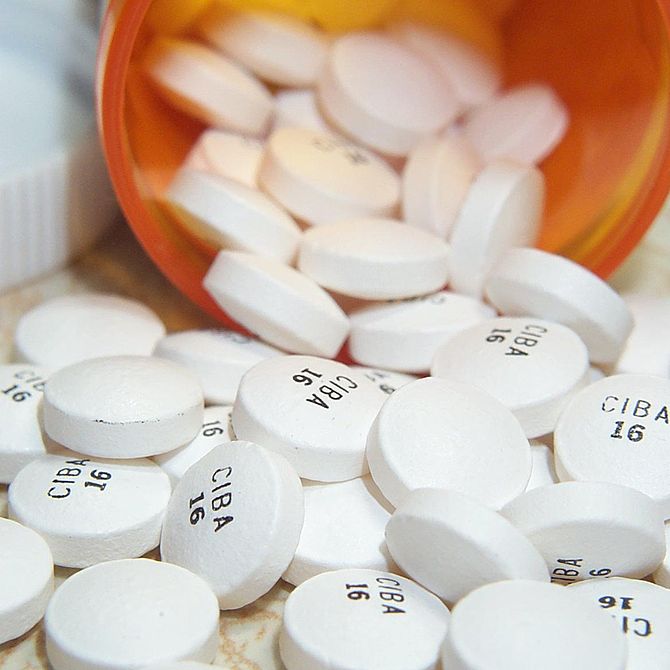No American in 2014 who watches television, reads a magazine, goes online or visits a doctor’s office can escape the ever-present promotion of prescription drugs.
No American in 2014 who watches television, reads a magazine, goes online or visits a doctor’s office can escape the ever-present promotion of prescription drugs. Pharmaceutical promotion, both directly to doctors and to patients, has been the backbone of prescription drug sales for decades, with sales driving everything from drug access to stock prices to research and development. So what happens when the third largest industry in the United States changes the way it promotes products? We might find out.
Scott Liebman, head of the FDA Regulatory and Compliance practice at Loeb & Loeb LLP explains, “A confluence of events has primed the life sciences industry for a paradigm shift. First Amendment challenges to restrictions on off-label communications, evolving transparency in pricing and payments, the Affordable Care Act and other key regulatory developments are coming together in a way that could fundamentally change the sales of drugs, devices, and biologics in this country.”
The Promotion Paradigm: “Ask Your Doctor About…”
The United States is one of only two nations in the world that allows direct-to-consumer advertising of regulated medical products. It is no coincidence that we also rank as the world leader in pharma research and the world’s largest market for pharmaceuticals. “In order to protect consumer safety while preserving consumer choice, regulators have developed numerous and rigid standards for promotional communications, especially those related to the marketing or advertisement of drugs off-label, in other words outside of their FDA-approved indication,” says Liebman.
At present, any promotional statements about a prescription product that are inconsistent with the prescribing information in the label are prohibited according to the Food, Drug and Cosmetic Act. Liebman further explains, “Any promotional statement must be accurate, complete, not misleading and balanced with information related to both benefits and risks.” Along with these regulations comes a highly active enforcement system that generates billions of dollars in revenue at the federal and state levels through settlements and penalties.
In reality, many drugs may be effective in treating disease states or patient populations outside their FDA-approved indications, creating the potential for billions of dollars in new sales. The burdensome regulation placed on manufacturer’s speech is not, however, intended to stop doctors from prescribing drugs for any use they believe to be safe and effective. According to a 2006 Stanford study, an estimated 21% of all written prescriptions are for non-primary label use. Dr. Randall Stafford says in his 2008 New England Journal of Medicine article that, “Although off-label prescribing — the prescription of a medication in a manner different from that approved by the FDA — is legal and common, it is often done in the absence of adequate supporting data. Off-label uses have not been formally evaluated, and evidence provided for one clinical situation may not apply to others.” If that is true, however, how are doctors predicating their off-label prescribing decisions?
Off-Label Communications: The FDA Loses Ground In Court
Doctors have access to off-label information from the manufacturers themselves through a legal carve out for scientific communications made in response to an unsolicited request. If a representative provides off-label information without receiving an unsolicited request, however, the communication can be deemed illegal. In 2009, Allergan sued the FDA asserting that the FDA’s prohibition on the dissemination of off-label information violated the company’s First Amendment right of free speech.
At that time, Allergan had allegedly been promoting Botox® for the treatment of migraine and other indications that were not yet approved. The three resulting whistle-blower suits left Allergan facing enormous civil and criminal penalties, so in 2010 it negotiated a $600 million settlement to resolve its liabilities and entered into a Corporate Integrity Agreement that required the withdrawal of its First Amendment complaint.
A mere six weeks later, Botox® received FDA approval for prevention of headaches in adult patients with chronic migraine.

Botox to go (Photo credit: Axel Hecht)
Allergan’s withdrawal left the industry without appropriate jurisprudence to guide decision making about off-label communications. That changed in 2012 when the US Circuit Court for New York decided US v. Caronia, determining that a sales representative for a pharmaceutical manufacturer had the constitutional right to discuss products for off-label uses. The Caronia case raised questions regarding the authority of the FDA, and to date, the FDA has not appealed. “Although only valid in the Second Circuit, the Caronia case opened the door for additional challenges,” says Liebman.
Since the Caronia case, the FDA revised and reissued a draft Guidance document related to the distribution of scientific and medical publications on unapproved new uses for drugs. Echoing Allergan’s 2009 complaint, the Washington Legal Foundation, a prominent public interest law and policy center, has submitted a comment challenging the Constitutionality of this draft Guidance.
How Much Does That Cost?
Several sections of the Affordable Care Act (ACA) address the cost of healthcare services, including prescription drugs. On the highest level, the ACA intends to shift from a fee-for-service model to a value-based outcomes model. In addition, the law mandates the disclosure of vast amounts of pricing and outcome information. The ACA drew attention to the issue of transparency around the pricing and usage of drugs, such as the costs associated with promotion of regulated products. Further, the FDA recently requested comments regarding use of comparative price information in direct-to-consumer and professional prescription drug advertisements.
“Because of new reporting requirements, a shift toward insurers reimbursing for value to the patient and the ability to make information publicly available online, consumers have an unprecedented amount of information available to make healthcare decisions,” explains Liebman.
The New Consumer
Today’s patient has far better tools to become informed about the prescription drugs available to them. The proliferation of information publically available on the internet has left the FDA racing to issue guidance for the monitoring of interactive media and flooding federal websites with new data sets every month. This same information is available to health care providers. Patients and physicians alike now have access to everything from peer reviewed journal articles to patient blogs. The industry is seeing the information gap close, creating a new patient-consumer who is able to make complex decisions that balance health and economic considerations. If a $50 injection can be used off-label to treat a patient’s condition with comparable safety and effectiveness to a $500 injection used on-label, wouldn’t price information be of great value in making the decision about which drug to use? More and more, patients have access to that type of information.








_8-250x220.jpg)
